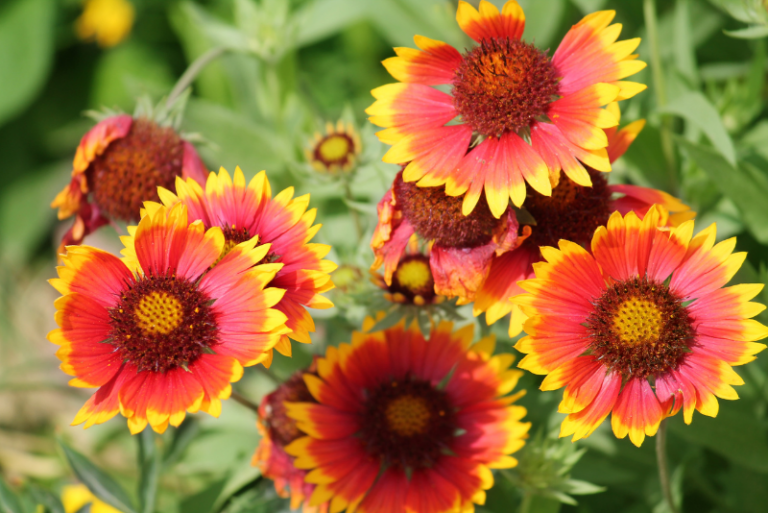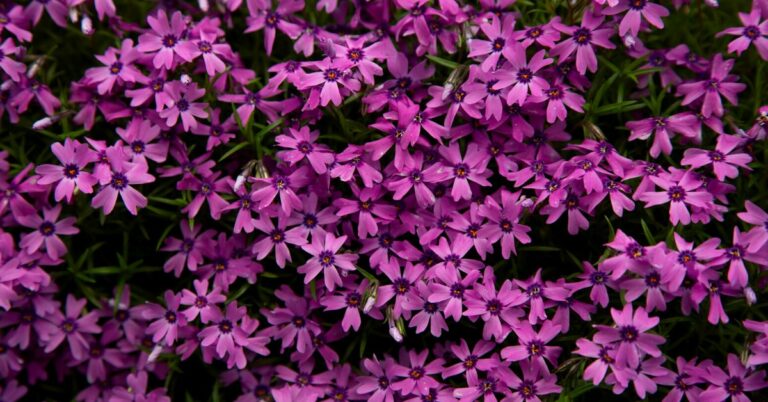Full Sun Plants – Thriving in Direct Sunlight
When it comes to adding life and vibrancy to outdoor spaces, few elements bring as much joy as a lush and colorful garden. A garden bursting with blooms not only uplifts spirits but also plays a vital role in the local ecosystem, attracting beneficial insects and birds. To create such a haven, it’s crucial to select plants that can withstand the intensity of direct sunlight. For gardening enthusiasts, landscape designers, and homeowners eager to transform their gardens, understanding and harnessing the potential of full sun plants is key to a successful, thriving oasis.
In this extensive guide, we’ll explore the world of full sun plants, detailing their benefits, suggesting top varieties, providing essential care tips, and inspiring creative design ideas. It’s time to shine a light on your garden and watch it blossom through even the hottest days of the year.
Benefits of Full Sun Plants
Improved Growth and Flowering
Plants that enjoy basking in full sun are built to make the most of its nurturing energy. They thrive on the radiant heat and the photosynthetic opportunity it provides. Full sun exposure encourages robust growth, with many plants producing an abundant display of flowers and, in some cases, delicious fruits.
Low Maintenance Requirements
By selecting full sun plants that are native to your region or those that are well-suited to the local climate, you can significantly reduce the need for intervention. These hardy species are often more resilient, require less watering, and can handle the challenges of direct sunlight with ease.
Ideal for Specific Landscaping Needs
Full sun plants are not just about sustenance; they play a significant role in the aesthetics of your garden. From creating striking focal points to forming the backdrop for more delicate shade-loving plants, they provide the structure and drama that a well-thought-out landscape design demands.
Top Full Sun Plants
Here are some of the stars of the full sun plant world that you can introduce to your garden to elevate it to new heights of beauty.
Sunflowers (Helianthus annuus)

There are few flowers that capture the essence of a sunny day quite like the sunflower. Not just a symbol of sunshine, these giants of the flower world are superbly adapted to full sun conditions. Available in a range of sizes and hues, their cheerful blooms can grow as large as dinner plates.
- Plant Description: Typically found in North America, sunflowers have become a global favorite. They are annuals, meaning they complete their life cycle within a single growing season. These tall, sturdy-stemmed plants can reach impressive heights of up to 10 feet, crowning their lofty stems with luminous yellow petals surrounding a brown, or dark-hued center.
- Plant Care Tips: Sunflowers have a moderate water requirement, needing about an inch of water per week. They’re not particularly fussy about soil type, but well-draining and fertile soil will yield the best results. Prune sunflowers by deadheading spent blooms to encourage further flowering.
Lavender (Lavandula)

A scent synonymous with relaxation, lavender’s aromatic spikes are not only a delight for the senses; they’re also a favorite of bees and butterflies. This hardy herb is a must-have for full sun gardens, offering a touch of elegance and a cottage-garden charm.
- Plant Description: Lavender is native to the rocky hills of the Mediterranean and thrives in hot, sunny climates. It is a perennial shrub that can range in height from one to three feet, depending on the variety. Its grey-green foliage contrasts beautifully with its purple, pink, or white flower spikes.
- Plant Care Tips: Lavender prefers “lean” or low-nutrient, well-draining soil. Overly rich soil can lead to legginess and fewer blooms. Water newly planted lavender deeply but infrequently to encourage deep root growth. Pruning after flowering helps maintain its shape and promote bushiness.
Succulents

The realm of succulent plants offers a plethora of options for full sun enthusiasts. These water-storing plants come in all shapes, sizes, and colors, making them versatile garden additions that can be used in both traditional and contemporary designs.
- Plant Description: Succulents have evolved to survive dry, arid conditions. They store water in their fleshy leaves, stems, or roots, allowing them to withstand periods of drought. There are numerous species suitable for full sun exposure, including the iconic Aloe Vera and the architectural Agave.
- Plant Care Tips: Succulents thrive in sandy or gravelly soil that drains well. They are remarkably low-maintenance and typically only need to be watered once the soil is completely dry. Overwatering can lead to rot, so moderation is key. Potted succulents should be placed in an area with good air circulation to prevent humidity-related issues.
Daylilies (Hemerocallis)

With their incredible range of colors and shapes, daylilies are not called the “perfect perennial” for nothing. These hardy plants are nearly indestructible, thriving in a variety of climates and soils, making them a favorite for gardeners looking for a reliable bloom.
- Plant Description: Daylilies are herbaceous perennials that clump from the root with long, lance-shaped leaves. The flowers, which are trumpet-shaped, come in a variety of colors and are known for their breathtaking one-day bloom cycle. Luckily, each stem can produce multiple flowers over several weeks.
- Plant Care Tips: Daylilies are generally low-maintenance but benefit from regular watering during dry periods. They prefer slightly acidic soil with good drainage. Remove the stems of spent blooms, also known as deadheading, to encourage more flowering and maintain the plant’s tidy appearance.
Plant Care Tips
For a garden full of health and vitality, follow these essential care tips to ensure your full sun plants are well looked after.
Watering Needs
Water is the lifeblood of your garden, especially when you’re dealing with the intense daylight hours of full sun exposure. The key to watering is consistency. Deep, infrequent watering is preferable, as it encourages plants to develop deeper root systems, making them more resilient to drought.
Different plants have varying water needs, so monitor the moisture levels of the soil and adjust your watering schedule accordingly. Consider investing in a soaker hose or drip irrigation system to deliver water directly to the roots of your plants, reducing evaporation losses and minimizing the growth of weeds.
Soil Requirements
Good soil is fundamental to plant health, and for full sun plants, it needs to be well-draining. Heavy, compacted soil can cause water to pool around the roots, leading to rot. Many full sun plants thrive in sandy or loamy soils, as these types allow water to percolate freely.
Regularly amend your garden beds with organic matter like compost to improve soil structure and fertility. Mulching around plants not only retains soil moisture but also moderates soil temperature, which is crucial when dealing with the extreme heat of full sun exposure.
Pruning and Maintenance
Pruning is a necessary part of maintaining the health and appearance of your garden. Cut back overgrown branches to stimulate new growth and flowering. Remove dead or diseased parts promptly to prevent the spread of illness.
Each plant has its own set of guidelines for pruning, so educate yourself on the specific needs of your garden’s inhabitants. It’s often best to prune after the flowering period to avoid cutting off next season’s blooms.
Pest and Disease Management
Even the most robust plants can fall prey to pests and disease, but a proactive approach can minimize the risk. Consider using pest-resistant cultivars when available. Monitor your plants regularly for signs of trouble, like wilting, discoloration, or stunted growth. Early detection can make treatment more effective.
Cultural controls, such as maintaining proper spacing between plants and providing adequate ventilation, can go a long way in reducing the incidence of disease. For pest management, organic solutions like neem oil or insecticidal soap can be effective, allowing you to protect your garden without resorting to harsh chemicals.
Conclusion
Utilizing full sun plants can be a rewarding experience. From ensuring a bouquet of color in your garden to attracting beneficial wildlife, these sun-loving plants are a cornerstone of many successful landscapes. However, success in the garden doesn’t happen by itself. It’s the result of careful planning, thoughtful design, and attentive care.
By selecting the right plants, understanding their needs, and integrating them into a harmonious design, you create an environment that not only survives the sun but thrives under its brilliant rays. With a little knowledge and a lot of love, your garden will be a shining example of the beauty and bounty that nature can provide.






